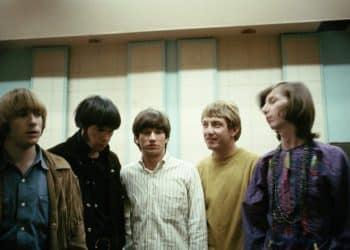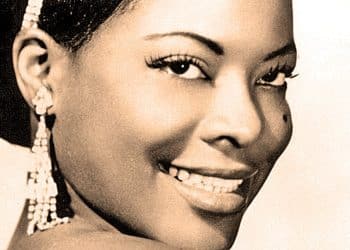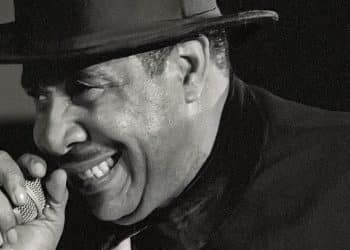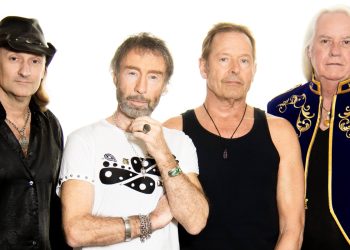Few bands in the history of music have left as indelible a mark as Nirvana. Emerging from the grunge scene of the early 1990s, the trio led by the legendary Kurt Cobain changed the face of rock music forever. Nirvana wasn’t just a band—it was a cultural phenomenon, a voice for a generation disillusioned by the status quo. With their raw lyrics, distorted guitar riffs, and Cobain’s haunting, soulful voice, they captured the angst, hope, and complexity of the human experience.
In this article, we celebrate Nirvana’s enduring influence by counting down their top 10 most popular songs of all time. These tracks showcase the band’s unparalleled ability to blend vulnerability with aggression, melody with chaos, and introspection with rebellion. From anthems that defined the grunge movement to deeply personal ballads that still resonate with fans decades later, these songs are more than music—they’re moments frozen in time.
Whether you’re a lifelong fan rediscovering the magic or a newcomer curious about what made Nirvana so iconic, this list will take you on a journey through their greatest hits. So, crank up the volume, feel the energy, and dive into the sound that changed everything.
Rewrite the following in a natural sounding way in the voice of a human writer and increase the length to 300 words in each songs:
Keep the format the same in regards with headings and numberings.
1. Smells Like Teen Spirit (1991)
Dubbed the anthem of a generation, Smells Like Teen Spirit is not just Nirvana’s most iconic song—it’s one of the most influential rock tracks of all time. Released in 1991 as the lead single from Nevermind, the song propelled Nirvana from underground grunge pioneers to global superstars almost overnight. With its gritty, distorted guitar riff, explosive chorus, and Kurt Cobain’s signature raspy vocals, Smells Like Teen Spirit captured the restless energy of youth and disillusionment in the early ’90s.
Lyrically, the song is cryptic and almost nonsensical at times, yet that only adds to its mystique. Cobain’s delivery is both detached and urgent, reflecting the spirit of a generation caught between apathy and rebellion. The famous quiet-loud-quiet structure, influenced by the Pixies, amplifies the tension before each chorus erupts in a cathartic explosion of sound.
Beyond its raw musical power, Smells Like Teen Spirit changed the course of rock music. It brought grunge into the mainstream, dethroned hair metal, and defined an era where the disaffected youth finally had a voice. The song’s music video—set in a grungy, chaotic high school gym—became just as iconic as the track itself. More than three decades later, Smells Like Teen Spirit remains a defining moment in rock history, a song that still resonates with outsiders, rebels, and anyone who has ever felt misunderstood.
2. Come as You Are (1991)
Moody, hypnotic, and drenched in eerie reverb, Come as You Are is one of Nirvana’s most hauntingly beautiful tracks. Released in 1991 as the second single from Nevermind, the song stands out with its mesmerizing, underwater-like guitar riff, which immediately draws listeners into its dark atmosphere. The track’s dreamlike quality contrasts with its grunge roots, making it one of the band’s most accessible and enduring hits.
Lyrically, Come as You Are is open to interpretation, with lines that suggest themes of identity, contradiction, and self-acceptance. Cobain’s vocals shift between a whisper and a restrained wail, embodying the uncertainty and emotional depth that permeate the song. The refrain, “And I swear that I don’t have a gun,” is repeated like a mantra, leaving an unsettling echo in the listener’s mind.
Despite its hypnotic appeal, Come as You Are sparked some controversy due to its striking similarity to Killing Joke’s 1984 song Eighties. While no legal action was taken, the resemblance remains a point of discussion among music historians. Regardless, Come as You Are became a defining track of the grunge era, its melancholic allure ensuring its place as a Nirvana classic.
3. Lithium (1991)
A song of emotional highs and lows, Lithium is a raw, introspective track that explores themes of faith, mental health, and self-acceptance. Released in 1991 as part of Nevermind, the song follows Nirvana’s signature quiet-loud-quiet structure, with verses that feel subdued and introspective before exploding into an anthemic, almost manic chorus.
The lyrics paint a picture of a protagonist who finds solace in religion, though it’s unclear whether the belief is genuine or simply a coping mechanism. Cobain’s voice shifts from resigned detachment to full-throated catharsis, reflecting the instability and turmoil within the song’s narrative. The repeated refrain, “I’m not gonna crack,” becomes more desperate each time, making the listener feel the underlying tension.
Musically, Lithium balances simplicity with impact. Its steady bassline and minimalist verses contrast sharply with the chorus, where the raw energy of grunge fully takes over. This dynamic push and pull make Lithium one of the most emotionally charged songs in Nirvana’s catalog. To this day, it remains a fan favorite, embodying the spirit of grunge with its blend of introspection and explosive energy.
4. Heart-Shaped Box (1993)
Dark, twisted, and deeply personal, Heart-Shaped Box marked a new phase in Nirvana’s evolution when it was released as the lead single from In Utero in 1993. The song’s unsettling melody and cryptic lyrics make it one of the band’s most intriguing works, drawing listeners into its world of obsession, pain, and longing.
Cobain’s lyrics are full of haunting imagery, blending themes of love and suffering in a way that feels both intimate and disturbing. Lines like “I wish I could eat your cancer when you turn black” reflect his ability to make poetry out of pain. Though many have speculated about the song’s meaning—some linking it to Cobain’s relationship with Courtney Love—the true inspiration remains ambiguous, adding to its mystique.
Musically, Heart-Shaped Box is mesmerizing. Its quiet verses, driven by a melancholic guitar riff, give way to an explosive, anguished chorus. Cobain’s vocals shift between a brooding murmur and a tortured howl, making the song feel like a rollercoaster of raw emotion. The song’s eerie music video, directed by Anton Corbijn, only adds to its nightmarish beauty. To this day, Heart-Shaped Box remains one of Nirvana’s most powerful and unsettling creations.
5. In Bloom (1991)
On the surface, In Bloom might seem like another catchy Nirvana anthem, but beneath its infectious melody lies a biting commentary on superficial fandom. Released in 1991 as the fourth single from Nevermind, the song takes aim at those who mindlessly consume music without understanding its meaning.
With its polished production, In Bloom is one of Nirvana’s most radio-friendly tracks, featuring an irresistibly catchy chorus and a tight, melodic structure. However, Cobain’s lyrics carry a sharp sense of irony, mocking those who sing along without grasping the message. The contrast between the song’s pop-friendly sound and its underlying sarcasm makes it a standout in Nirvana’s catalog.
The music video, which parodies 1960s television performances, further emphasizes the song’s satirical edge. The band is dressed in suits, mimicking classic pop acts, before the performance descends into chaotic destruction—an unmistakable middle finger to the commercial music industry.
More than just a great song, In Bloom is a testament to Cobain’s frustration with fame and the commercialization of grunge. It’s a reminder that Nirvana was never meant to be mainstream, even as their music dominated the airwaves.
6. About a Girl (1989)
Long before Nirvana became the face of grunge, About a Girl showcased Kurt Cobain’s ability to blend raw emotion with pop sensibility. Released in 1989 on their debut album Bleach, the song stands out from the album’s heavier, punk-influenced sound, featuring a bright, jangly melody reminiscent of The Beatles and R.E.M. This contrast made About a Girl an early indication of Cobain’s knack for writing catchy yet emotionally complex songs.
The lyrics are straightforward and deeply personal, inspired by Cobain’s then-girlfriend, Tracy Marander. She had reportedly asked him why he never wrote a song about her, prompting this deceptively sweet yet weary love song. Beneath its seemingly simple exterior, the track conveys frustration and discontent within a relationship, with lines like “I can’t see you every night for free” hinting at underlying struggles.
While About a Girl didn’t gain mainstream attention upon release, it became one of Nirvana’s most celebrated tracks after their MTV Unplugged in New York performance in 1993. The acoustic rendition stripped the song down to its essence, allowing its emotional weight to shine through. Today, it remains a fan favorite and a testament to Nirvana’s ability to craft songs that transcend the grunge label.
7. All Apologies (1993)
Hauntingly introspective and deeply melancholic, All Apologies is one of Nirvana’s most poignant tracks. Released in 1993 as part of In Utero, the song feels like a farewell, drenched in a sense of resignation and sorrow. Cobain’s weary vocals, combined with the song’s droning melody, create an atmosphere of quiet despair, making it one of the most emotionally raw moments in the band’s discography.
Lyrically, All Apologies is open to interpretation, but many believe it reflects Cobain’s internal struggles—both with fame and his personal demons. The repeated refrain, “All in all is all we are,” feels like a meditation on existence itself, carrying a sense of inevitability and detachment. The song’s subdued instrumentation, featuring cello and a simple yet hypnotic chord progression, only amplifies its mournful tone.
The MTV Unplugged version, performed just months before Cobain’s passing, is especially haunting. Stripped of its grunge elements, the song’s fragility is laid bare, making it feel like a final confession. Whether seen as an apology, an acceptance of fate, or a reflection on relationships, All Apologies remains one of Nirvana’s most powerful and heartbreaking songs.
8. Rape Me (1993)
Bold, confrontational, and undeniably unsettling, Rape Me is one of Nirvana’s most controversial songs. Released in 1993 as part of In Utero, the track immediately sparked debates due to its provocative title and subject matter. However, rather than glorifying violence, the song serves as a defiant statement against abuse and exploitation.
Musically, Rape Me is built on a simple, repetitive chord progression, reminiscent of Smells Like Teen Spirit, but with a much darker and more intense tone. Cobain’s lyrics, which alternate between vulnerability and defiance, create a stark contrast, making the song feel like both a plea and a protest. The chorus—delivered in a raw, almost anguished tone—transforms the track into a powerful act of resistance.
Despite the controversy, Cobain was adamant about the song’s meaning, stating that it was meant as an anti-rape anthem, giving a voice to victims rather than glorifying violence. When Nirvana performed it on Saturday Night Live, the moment was electric, underscoring the band’s willingness to challenge societal norms. Rape Me remains one of Nirvana’s most daring and socially charged songs, a track that continues to provoke discussion and reflection.
9. Polly (1991)
One of the most chilling songs in Nirvana’s catalog, Polly is a stark, acoustic track that tells a harrowing story. Released in 1991 on Nevermind, the song was inspired by a real-life case of abduction and escape. Unlike many of Nirvana’s grunge-heavy tracks, Polly is stripped down to its bare bones, featuring only an acoustic guitar, bass, and Cobain’s subdued yet haunting vocals.
The lyrics are written from the perspective of the perpetrator, which makes the song even more disturbing. Lines like “Polly says her back hurts” and “She caught me off my guard” are chilling in their matter-of-fact delivery, forcing listeners to confront the unsettling subject matter. The decision to present the story in such a detached, almost casual tone adds to the song’s eerie atmosphere.
Cobain was deeply affected by issues of violence and injustice, and Polly serves as a stark reminder of the real horrors that exist in the world. Despite its unsettling nature, the song remains one of Nirvana’s most compelling pieces, a testament to their ability to tackle difficult themes with raw honesty.
10. Drain You (1991)
An underrated gem from Nevermind, Drain You is a burst of energy packed with surreal, almost absurdist lyrics about love and dependency. Released in 1991, the song features a driving rhythm, infectious melodies, and a dynamic bridge section that descends into controlled chaos. It’s a perfect example of Nirvana’s ability to balance melody with aggression, making it a standout track in their discography.
Cobain once stated that he preferred Drain You over Smells Like Teen Spirit, emphasizing its unique structure and playful yet eerie lyrics. The verses are almost sweet in their delivery, but the song’s bridge section—featuring experimental guitar noise and dissonant feedback—throws the listener into a swirling, chaotic soundscape before launching back into the powerful final chorus.
Lyrically, Drain You explores themes of intense emotional connection, possibly referencing toxic relationships or even childhood dependence. Lines like “It is now my duty to completely drain you” suggest a parasitic, consuming kind of love—one that is both irresistible and destructive.
Despite never being released as a single, Drain You was frequently performed live, often extended with extended noise jams. Its relentless energy and melodic hooks have made it a fan favorite, proving that even Nirvana’s deep cuts carry the same electrifying power as their biggest hits.









